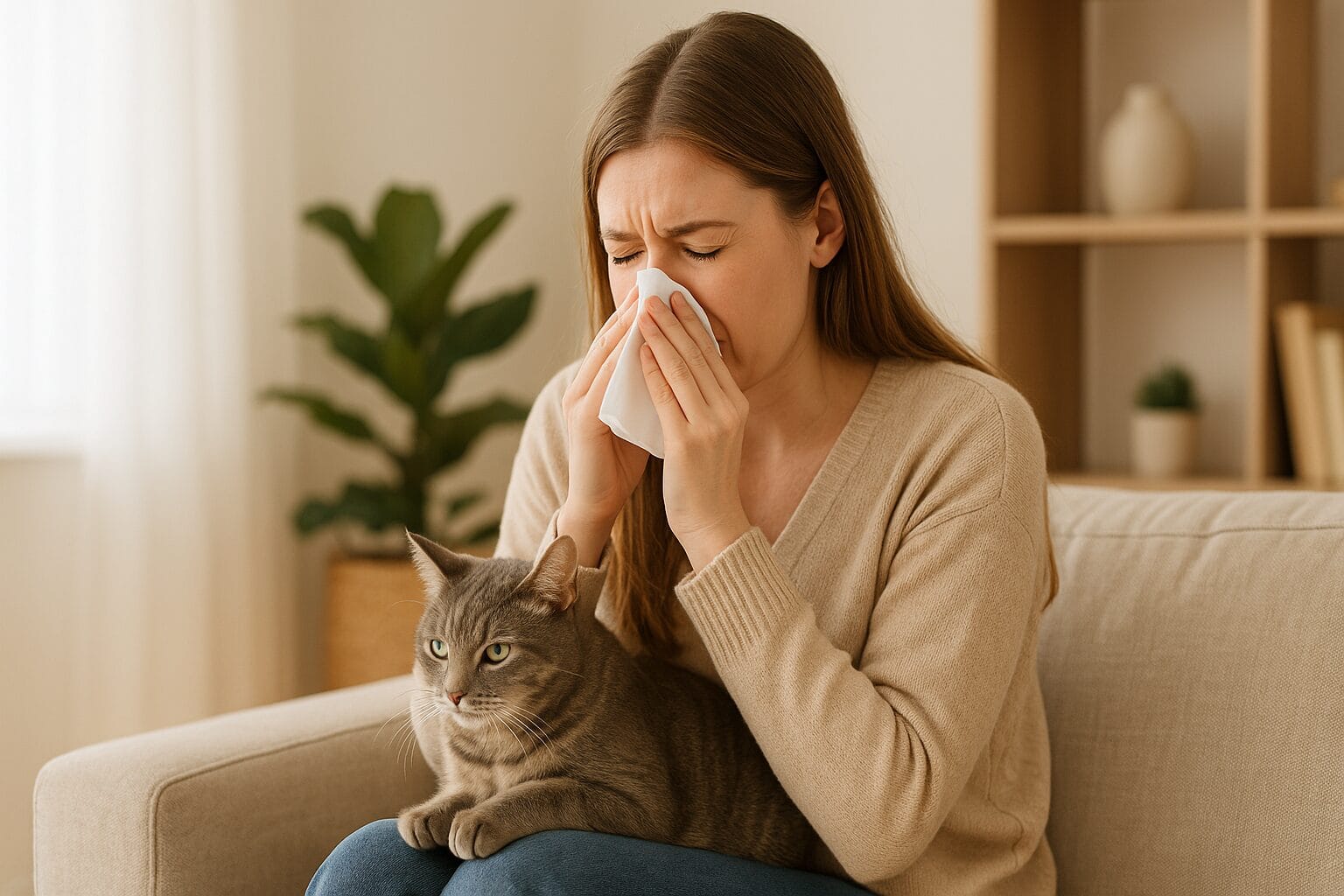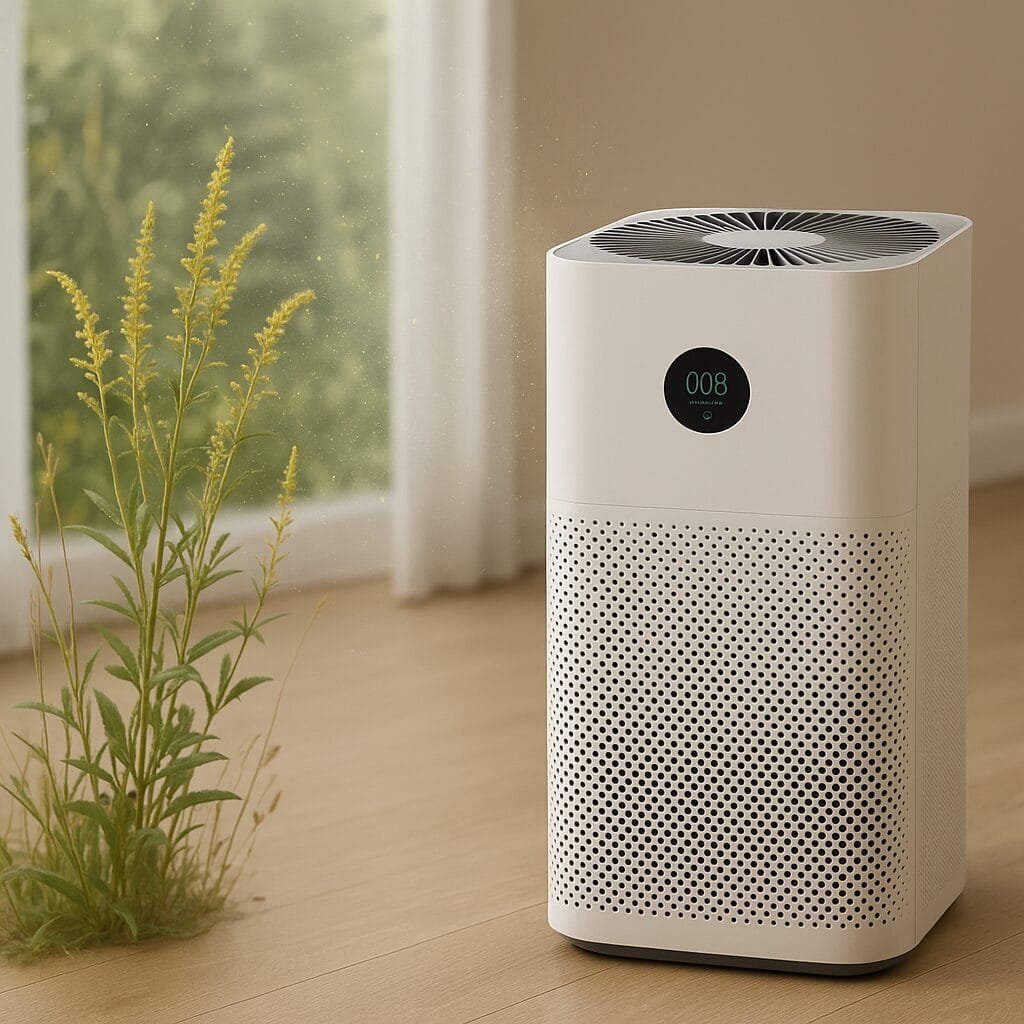If you adore cats but can’t stop sneezing or rubbing your itchy eyes every time you’re near one, you’re not alone. Cat allergies affect millions of people — yet many pet lovers aren’t ready to give up their furry companions. The good news? You can manage and reduce cat allergies naturally without harsh medications or constant discomfort.
Let’s explore what causes cat allergies, how to recognize them, and natural, practical ways to help you breathe easier while keeping your favorite feline in your life.
Understanding cat allergies
Before we fix the problem, it helps to know what’s really causing it.
Contrary to popular belief, cat hair isn’t the main culprit — it’s actually a protein called Fel d 1, found in your cat’s saliva, skin flakes (dander), and urine.
When cats groom themselves, this protein sticks to their fur. As they move around the house, these microscopic allergens spread into the air and settle on surfaces — sofas, carpets, bedding, and even your clothes. Once you breathe them in, your immune system reacts as if it’s under attack, causing those familiar allergy symptoms.
Common cat allergy symptoms include:
- Sneezing and nasal congestion
- Itchy, red, or watery eyes
- Scratchy throat or coughing
- Skin rashes or hives after contact
- Worsening asthma or breathing difficulty
If these symptoms appear soon after you spend time near cats — or linger in cat-friendly homes — you’re likely allergic to Fel d 1.
Natural ways to reduce cat allergies
You don’t have to choose between comfort and companionship. By combining smart cleaning habits, immune-supporting foods, and natural remedies, you can drastically lower your allergy symptoms and enjoy life with your cat again.
1. Create an allergy-friendly home
Your home environment plays a huge role in managing allergies.
Here’s how to reduce allergens indoors:
- Keep your bedroom cat-free: You spend about eight hours a night there, so it should be your safe zone.
- Use a HEPA air purifier: These remove airborne allergens like dander and dust, keeping the air cleaner.
- Vacuum and dust regularly: Use a vacuum with a HEPA filter, and mop floors weekly.
- Wash bedding and curtains often: Use hot water to break down allergens effectively.
- Choose easy-to-clean furniture: Leather, faux leather, or tightly woven fabrics trap less dander than plush materials.
Pro tip: Wash your hands and change clothes after cuddling your cat to avoid spreading allergens throughout the house.
2. Reduce allergens at the source
The fewer allergens your cat produces or spreads, the better you’ll feel.
- Brush your cat often: Regular brushing (preferably outdoors) helps reduce loose fur and dander.
- Bathe your cat occasionally: Using vet-approved wipes or shampoos can lower allergen levels temporarily.
- Feed a high-quality diet: Omega-3-rich foods (like salmon oil) support skin health, leading to less dander.
- Keep litter boxes clean: Ammonia from cat urine can worsen allergy symptoms, so scoop daily and ventilate the area.
Healthy cat = fewer allergens. A good diet and grooming routine can make a noticeable difference within weeks.
3. Support your immune system naturally
A strong immune system can help your body react less aggressively to allergens.
- Eat vitamin C-rich foods (like oranges, strawberries, and bell peppers). Vitamin C acts as a natural antihistamine.
- Try local honey: Some people find that consuming small amounts of locally produced honey helps the body adapt to local allergens.
- Use probiotics: Gut health influences immune balance. Yogurt, kefir, or probiotic supplements can help.
- Drink herbal teas: Green tea, nettle tea, and chamomile tea contain natural anti-inflammatory compounds that may calm allergic reactions.
- Stay hydrated: Water helps flush out allergens and supports healthy mucus membranes in your nose and throat.
Natural antihistamines like quercetin (found in apples and onions) may also reduce sneezing and watery eyes over time.
4. Clean smarter, not harder
Even after cleaning, allergens can cling to fabrics and float around for days. Here’s how to outsmart them:
- Use microfiber cloths for dusting — they trap more dander.
- Run an air purifier 24/7 in the most used rooms.
- Replace HVAC filters every 30–60 days to keep air quality high.
- Avoid strong chemicals: They can irritate your respiratory system, making symptoms worse. Opt for natural cleaners like vinegar and baking soda.
- Add indoor plants: Peace lilies, spider plants, and snake plants help purify air naturally.
5. Try natural allergy relief remedies
Several natural remedies can help soothe symptoms when they appear:
- Saline nasal rinses: Rinse your sinuses with saline water to remove allergens and reduce congestion.
- Steam inhalation: Inhaling steam infused with eucalyptus or peppermint oil can ease breathing.
- Essential oils: Lavender and tea tree oil (used in diffusers) have mild anti-inflammatory effects.
- HEPA masks: When cleaning or brushing your cat, wear a mask to limit inhalation of dander.
A few simple adjustments can transform your allergy experience — from constant sneezing to calm breathing.
6. Manage stress and rest well
You might not think stress has anything to do with allergies, but it does. High stress weakens your immune system and worsens allergic responses.
Practice mindfulness, get enough sleep, and spend time outdoors. Your overall well-being directly affects how your body reacts to allergens.
When natural methods aren’t enough
If your symptoms still make life difficult even after consistent natural care, it’s time to consult an allergy specialist. They can perform skin or blood tests to confirm cat allergies and may recommend:
- Prescription antihistamines or nasal sprays
- Immunotherapy (allergy shots or sublingual tablets) to gradually desensitize your immune system
Combining these medical options with your natural strategies often gives the best long-term relief.
Final thoughts
Living with a cat allergy doesn’t have to mean saying goodbye to your cat. With patience, consistency, and a few natural lifestyle adjustments, you can create a balance between your health and your love for cats.




